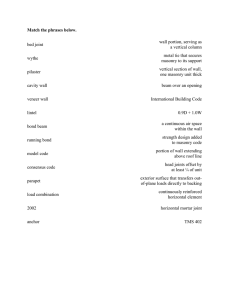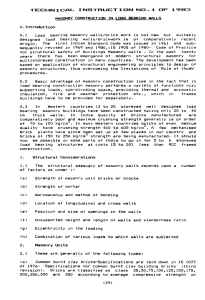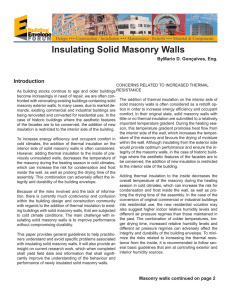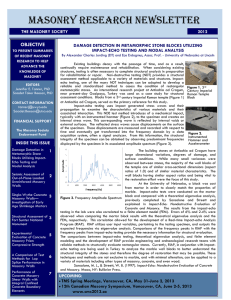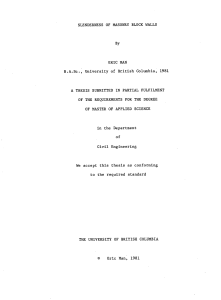Temporary bracing for masonry walls
advertisement
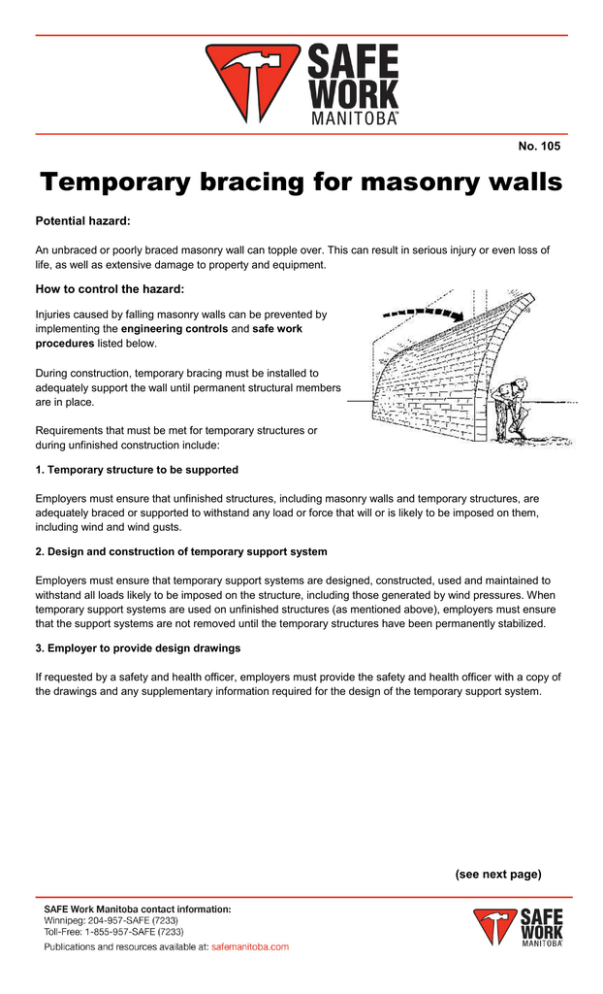
No. 105 Temporary bracing for masonry walls Potential hazard: An unbraced or poorly braced masonry wall can topple over. This can result in serious injury or even loss of life, as well as extensive damage to property and equipment. How to control the hazard: Injuries caused by falling masonry walls can be prevented by implementing the engineering controls and safe work procedures listed below. During construction, temporary bracing must be installed to adequately support the wall until permanent structural members are in place. Requirements that must be met for temporary structures or during unfinished construction include: 1. Temporary structure to be supported Employers must ensure that unfinished structures, including masonry walls and temporary structures, are adequately braced or supported to withstand any load or force that will or is likely to be imposed on them, including wind and wind gusts. 2. Design and construction of temporary support system Employers must ensure that temporary support systems are designed, constructed, used and maintained to withstand all loads likely to be imposed on the structure, including those generated by wind pressures. When temporary support systems are used on unfinished structures (as mentioned above), employers must ensure that the support systems are not removed until the temporary structures have been permanently stabilized. 3. Employer to provide design drawings If requested by a safety and health officer, employers must provide the safety and health officer with a copy of the drawings and any supplementary information required for the design of the temporary support system. (see next page) Page 2 Temporary bracing for masonry walls Bltn. 105 4. Approval by professional engineer Employers must ensure the design of the temporary support system is approved by a professional engineer, and that the drawings and any supplementary information: a) show the dimensions and specifications, including the type and grade, of all components of the support system; b) show the loads for which the support system is designed; c) bear the seal and signature of the professional engineer; and d) be kept at the project site during the construction, erection, use, maintenance and dismantling of the support system. 5. Employer to construct according to design Employers must construct, use, erect, maintain, and dismantle a temporary support system according to the approved design described above. Reference to legal requirements under workplace safety and health legislation: Temporary Structures: Manitoba Regulation 217/2006 – Part 30 Additional workplace safety and health information available at: safemanitoba.com Revised: November 2014 Last Reviewed/Revised: May 2009
